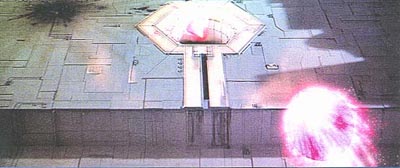Always back up
My 3½-year-old son has become a Star Wars freak in the last few weeks. He watches all five movies (and recently the new trailer) every weekend — though not in order and not even in the order of their chapters. This constantly-on video mash-up does a good job of highlighting patterns in Lucas’s thinking.

So, here’s my first observation (though probably not the first time this has been observed). Single points of technical failure run throughout the Star Wars movies. You’d think that a culture advanced enough to have intelligent robots and laser swords that don’t singe your retinas when you hold them in front of your face would understand the importance of redundancy. Consider the following.
- Both Death Stars were destroyed by single shots to essentially unprotected (though difficult to reach) Achille’s heels.
- The shield protecting the unfinished Death Star on Endor was disabled by blowing up a single power station.
- Young Anakin destroys the trade federation ship — accidentally! — with a single shot to something.
- The entire battalion of battle droids on Naboo is disabled by the explosion of the trade ship.
In a way, single points of failure are great storytelling devices. They make the goal-driven narrative work. It just wouldn’t be all that compelling to watch Han and company scamper around Endor blowing up power station after power station, would it? Or to hear Han say “Great shot kid, that was one in a million! Now let’s get the other four shafts!”














It wasn’t until Luke went to the source that the empire was crushed. If your thinking like a hacker, finding the secret plans was akin to hacking into the controller to give Luke access to root, the proverbial emperor.
The emporer was also smart. All important information was kept close. Subsystems were autonomous and provided failure tolerance for the kernal.
The emporer’s last defense was to attempt to zombie Luke with his Vader bot. 😉
Ah, swim in the geekness.